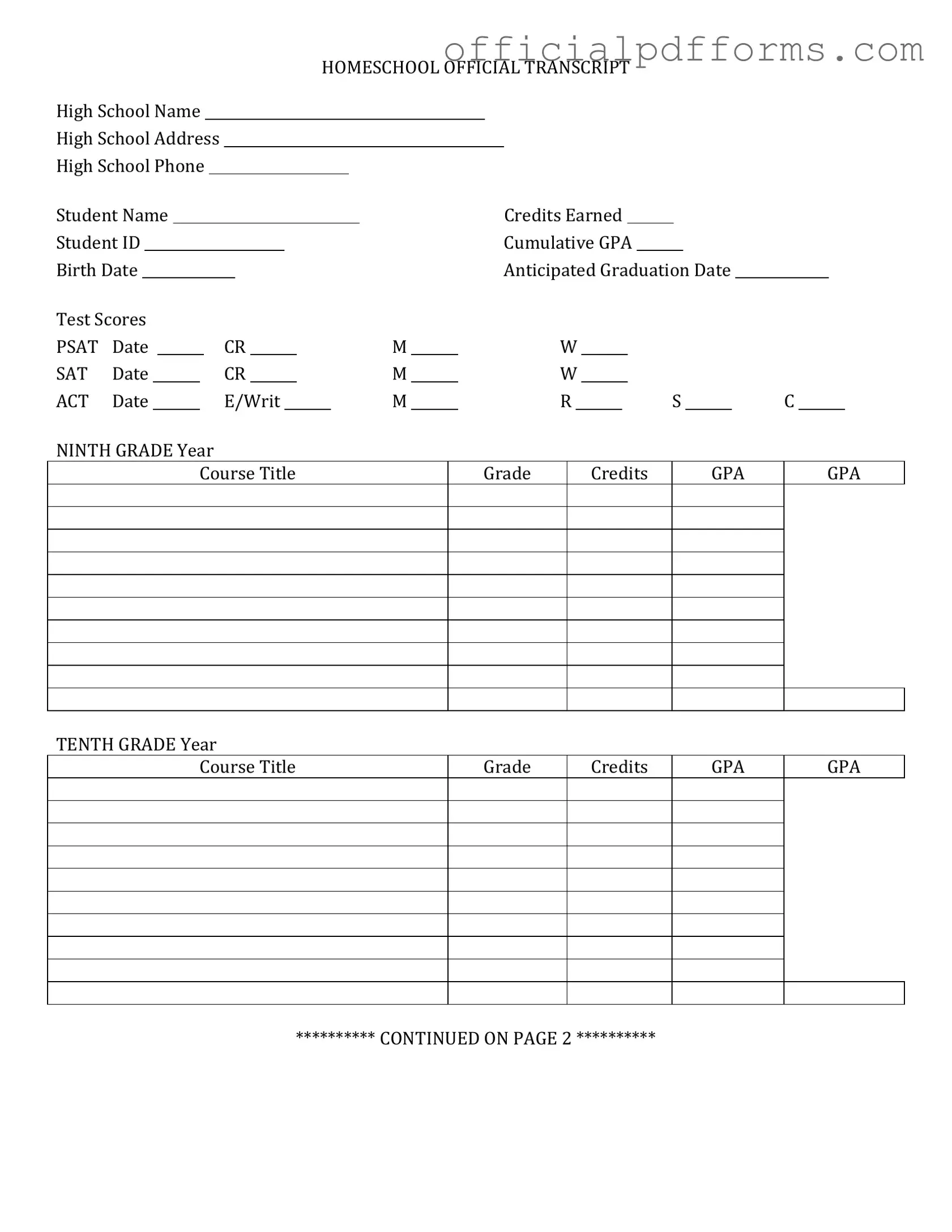What is a High School Transcript?
A high school transcript is an official document that records a student's academic performance throughout their high school years. It typically includes courses taken, grades earned, and credits received. Transcripts are often required for college applications, job applications, and other educational opportunities.
Why do I need a High School Transcript?
You may need a high school transcript for several reasons, including:
-
Applying to colleges or universities.
-
Meeting job application requirements.
-
Transferring to another school.
-
Proving your academic history for scholarships or grants.
How can I request my High School Transcript?
To request your transcript, follow these steps:
-
Contact your high school’s guidance office or registrar.
-
Fill out any required request forms.
-
Provide identification, if necessary.
-
Pay any associated fees, if applicable.
Some schools may allow you to request transcripts online, while others may require a written request.
Is there a fee to obtain my High School Transcript?
Many high schools charge a small fee for processing transcript requests. Fees can vary by school, so it’s best to check with your school’s office for specific details. Some schools may offer free transcripts, especially if you are currently enrolled.
How long does it take to receive my High School Transcript?
The time it takes to receive your transcript can vary. Typically, you can expect to receive it within a few days to a couple of weeks. Factors that can affect processing time include the school’s workload, the method of request, and whether you have any outstanding fees or obligations.
Can I request my transcript if I am no longer enrolled?
Yes, you can still request your high school transcript even if you are no longer enrolled. Most schools maintain records for several years after a student has graduated or left. You may need to provide additional identification or information to verify your identity.
What if I find an error on my High School Transcript?
If you notice an error on your transcript, contact your high school’s guidance office or registrar immediately. They will guide you through the process of correcting any inaccuracies. Be prepared to provide documentation or evidence to support your claim.
Do I need to send my High School Transcript directly to colleges?
Yes, many colleges and universities require that transcripts be sent directly from your high school to ensure authenticity. Some schools may allow you to submit a sealed transcript yourself, but it’s important to check the specific requirements of each institution.
What should I do if I lost my High School Transcript?
If you have lost your transcript, you can request a new copy from your high school. Follow the same steps as you would for a regular transcript request. Be sure to provide any necessary information to help the school locate your records quickly.
